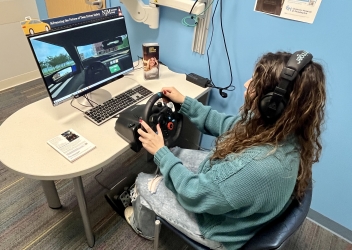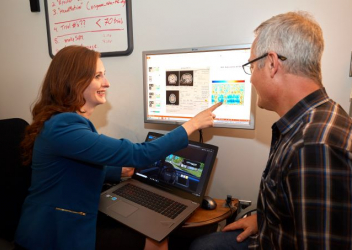Neuroscience of Driving Program
The Neuroscience of Driving Program at CIRP is helping to advance the science through the study of ongoing development of the brain and cognitive function during adolescence. Researchers are learning that this time of development may impact the ability of young drivers to attend to the road and drive safely.
The field of neuroscience has traditionally relied on the use of simplified tasks of isolated brain functions, such as pressing a button in response to a visual or auditory cue (or both) following a pre-established rule, but these tasks do not capture the brain's ability to handle complex real-world tasks like driving that rely on the integration of information from multiple systems in the brain (visual, motor, and cognitive systems).
To bridge basic neuroscience with applied driving research at the clinical and broader population level, the Young Driver Safety researchers at CIRP recently established the Neuroscience of Driving Program in partnership with the Annenberg Public Policy Center at the University of Pennsylvania and the neuroradiology Magnetoencephalography (MEG) Imaging Center at Children's Hospital of Philadelphia.
The team has already established a novel paradigm of simultaneous whole cortex MEG neuroimaging and eye-tracking recording during simulated driving. Neuroscience of Driving Program researchers can now track eye movements and brain responses, second-by-second, while participants and patients are driving.
The long-term goal of the Neuroscience of Driving Program is to identify the neural mechanisms underlying driver errors so that novel interventions can be developed to improve driver safety. In addition, this CIRP partner program aims to develop simulated driving as a probe of complex integrated brain function. This would allow us to use driving (a complex, highly relevant and high-risk task) to investigate typical and atypical neural and cognitive development in adolescents.
Read about the program's virtual driving assessment research.
Read about the program's driver licensing and training research.






